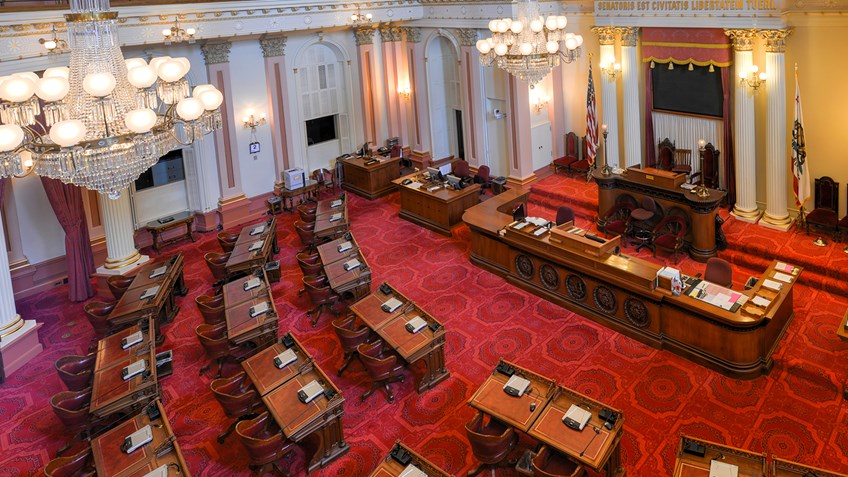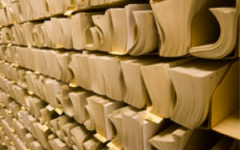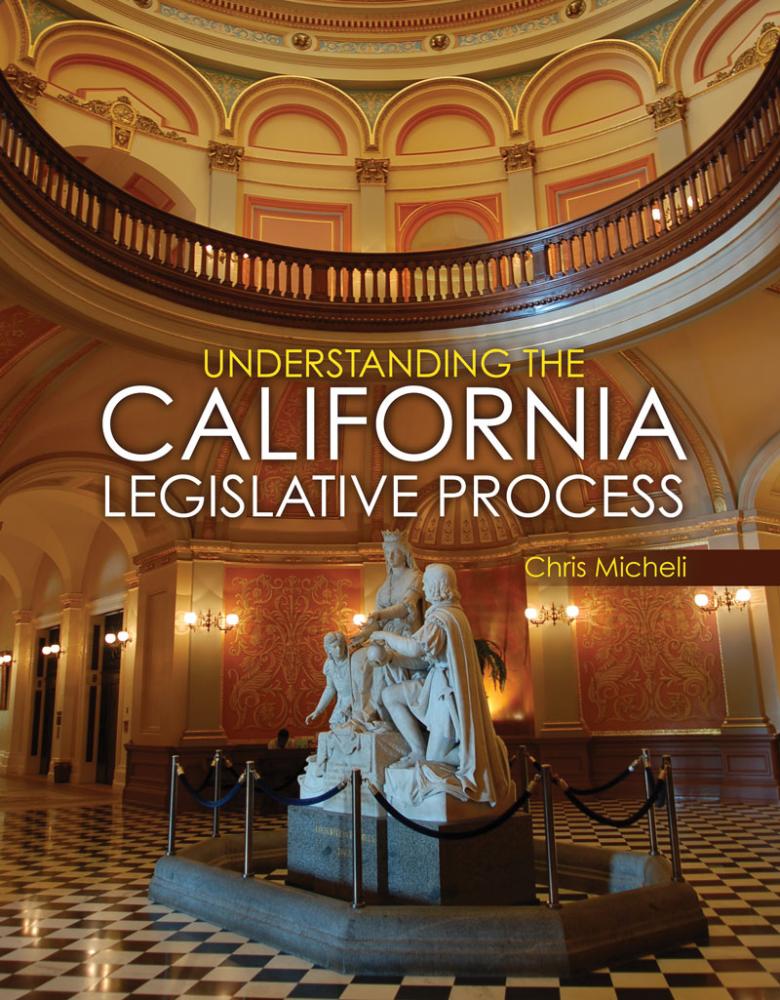
The California Senate chambers. (Photo: Wikipedia)
Drafting Considerations for a California Legislative Resolution
The bill drafter must utilize all of the usual guidelines of bill drafting as well as the required drafting style for California measures
By Chris Micheli, October 28, 2020 6:30 am
In the California Legislature, there are three types of resolutions. According to the Legislative Counsel, “two of these, concurrent resolutions and joint resolutions, require consideration and adoption by both houses of the Legislature before they can take effect. House (Assembly) and Senate resolutions are adopted by the house of origin only.” All three types of resolutions require a majority vote for passage and they are not considered by the Governor.
Like other legislative measures, a title is drafted and a Legislative Counsel’s Digest must be prepared that explains what the resolution proposes to do. Because there is not an existing law section of the Digest, the explanation is usually just one sentence. For example, ACR 80 from the 2019 Session had the following Legislative Counsel’s Digest: “This measure would recognize the week of May 13, 2019, to May 20, 2019, inclusive, as Infrastructure Week, and would urge the citizens of California to join in this special observance with appropriate events and commemorations.”
The Legislative Counsel’s Digest for a Concurrent Resolution usually begins: “This measure would ….” The Legislative Counsel’s Digest for a Joint Resolution usually begins: “This measure would urge the Congress and the President of the United States to…” On the other hand, a house resolution does not have a Digest. Instead, it contains a heading that begins: “Relative to ….”
In terms of the Legislative Counsel’s Digest Key, a house resolution does not contain any keys. For concurrent and joint resolutions, the Digest Key has only a single key: Fiscal committee. In other words, does the concurrent or joint resolution need to be referred to the fiscal committee for consideration of any possible fiscal impacts due to the language of the resolution.
Thereafter, the text of the resolution begins, which utilizes “Whereas” clauses and concludes with “Resolved” clauses. There is no limitation on the number of Whereas clauses that a resolution can contain. There is usually half a dozen or so, but some resolutions have two or three, while others contain a dozen or more Whereas clauses.
For a concurrent resolution that originates in the Assembly, the first Resolved clause begins: “Resolved by the Assembly of the State of California, the Senate thereof concurring, That the Legislature ….” For a joint resolution that originates in the Senate, the first Resolved clause begins: “Resolved by the Senate and the Assembly of the State of California, jointly, That the Legislature urges the Congress of the United States to ….”
For a concurrent resolution that originates in the Assembly, the final Resolved clause usually provides: “Resolved, That the Chief Clerk of the Assembly transmit copies of this resolution to the author for appropriate distribution.” For a joint resolution that originates in the Senate, the final Resolved clause usually provides: “Resolved, That the Secretary of the Senate transmit copies of this resolution to the President and Vice President of the United States, to the Speaker of the House of Representatives, to the Majority Leader of the United States Senate, to each Senator and Representative from California in the Congress of the United States, and to the author for appropriate distribution.”
For the most part, drafting a resolution in the California Legislature requires the bill drafter to utilize all of the usual guidelines of bill drafting as well as the required drafting style for California measures.
- Valuation for Eminent Domain - December 31, 2025
- Third Quiz on Where Areas of Law Are Found in the California Codes - December 30, 2025
- Management of Unclaimed Property - December 30, 2025




